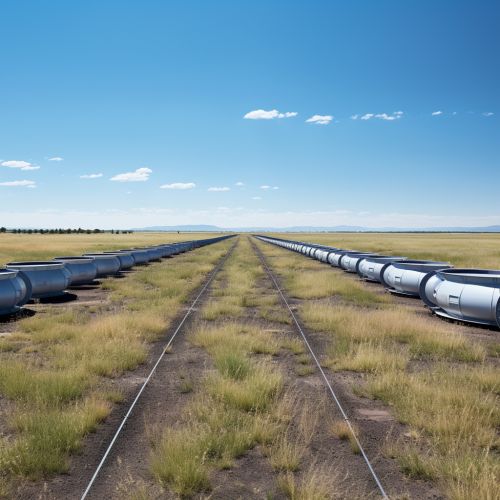LIGO
Overview
The Laser Interferometer Gravitational-Wave Observatory (LIGO) is a large-scale physics experiment and observatory to detect cosmic gravitational waves and to develop gravitational-wave observations as an astronomical tool. It is a project funded by the National Science Foundation (NSF) and operated by the Massachusetts Institute of Technology (MIT) and the California Institute of Technology (Caltech).


History
The proposal for LIGO was first drafted in the 1980s by Rainer Weiss of MIT and Kip Thorne and Ronald Drever of Caltech. The project was officially approved by the NSF in 1990, and construction of the initial LIGO observatories was completed in 1999. The first observations were made in 2001, but no gravitational waves were detected in the initial phase of operation, known as Initial LIGO.
Design and Operation
LIGO is a large-scale interferometer that uses laser light split into two beams that travel back and forth down long arms. The beams are used to monitor the difference between the two arm lengths, which changes as gravitational waves pass through the observatory. The design of LIGO is a Michelson interferometer with Fabry–Pérot cavities, a type of interferometer that uses two mirrors to amplify the path of the light.
Advanced LIGO and Gravitational Wave Detection
In 2010, upgrades were initiated to create Advanced LIGO, which began observational runs in 2015. On September 14, 2015, LIGO made the first direct observation of gravitational waves, which are ripples in the fabric of spacetime caused by the acceleration of massive objects. This observation confirmed a major prediction of Albert Einstein's general relativity and opened up a new way to observe the universe.
Future Developments
Plans for the future of LIGO include further upgrades to the detectors, as well as the construction of additional observatories around the world to improve the ability to locate the sources of gravitational waves. These plans are part of a larger international effort to create a global network of gravitational wave observatories.
